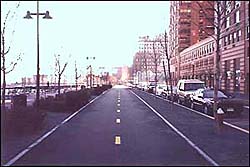
Welcome to Fletcher's Folly.
Land Use refers to the human use of an area. Some examples of this would be a road for transportation or a grass field for a sports match. A variety of factors in the State of New Jersey are changing large areas of the state from land uses such as agricultural and tree covered to residential, commercial, or industrial uses. This change is due to a variety of factors including a shift to a more suburban lifestyle, affordable transportation provided by cars and new roads, and the need for new houses and jobs as the state population increases.
Traditionally, towns and cities were designed to maximize the amount of available space: residential, commercial and industrial land areas were intermingled with each other. This was done for obvious reasons, just imagine taking a 10-mile horseback ride to pick up a gallon of milk! As the ease and utility provided by modern cars increased so did the distance it was feasible to live away from cities and towns.
By using a variety of tools including altering municipal zoning maps, communities can make informed decisions on future land use. Zoning maps designate the allowed uses of land within a municipality. Traditionally zoning in America has been haphazard and disorganized with very little thought to the functionality of the landscape being created.
In this tutorial we compare two town zones for a fictitious town in New Jersey, called Fletcher's Folly. We'll contrast Fletchers current zoning (based on the real zoning of a town in New Jersey) with a zoning scenario created by the Regional Planning Partnership (RPP) to highlight a goal-orientated approach to zoning.
Let's look at how Fletcher's Folly is zoned today. 









